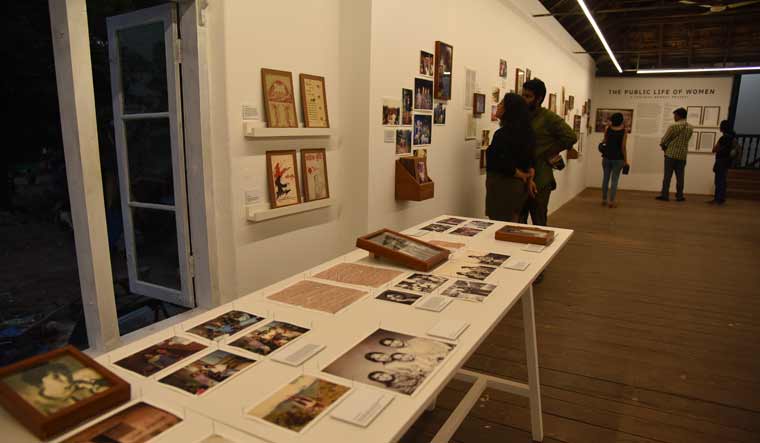On display at Pepper House, as part of the Kochi-Muziris Biennale, are 8,000 photographs depicting the extensive history of women's movements in Nepal. Curated by NayanTara Gurung Kakshapati and Diwas Raja KC, the photo gallery titled 'The Public Life of Women' intends to track the path of protests to increase women's visibility in public places, education, trade, and history.
The road was not easy, but the photo collection succeeds in showing viewers that the women of Nepal were tenacious and uncompromising in the pursuit of their goals. The photos on display were selected from a larger collection of about 1,20,000 photographs from the Nepal Picture Library, initiated in 2018.
As personal albums were included, every unique form of protest that women used was conspicuously represented. The massive rallies—unquestionably activities that defied social conventions—translated into pathways toward better visibility for women. Women's movements for visibility were centered on marking a space for their stories in history books as well. The 'publicity' became a fundamental strategy in establishing their actions as an outcry for freedom that would not stop until it is heard. Women needed to be able to speak in public, work and earn money, obtain education, travel, and move freely in both private and public settings.
The photo collection opens a window into a wide range of personal and public protests, right from Mangala Devi who founded the Nepal Women's Association and campaigned for women's education, to Hisila Yami who encouraged her daughter to be proud of her womanhood in a personal letter to her.
It is impressive to see that women had started fighting for what matters to them in ways that ensured they were heard loud and clear. The numerous rallies held over 50 years were also beneficial in voicing opposition to caste concerns. The initiative urged Tharu (an indigenous ethnic group) women to rise up against landlord abuse and unite against their oppressors.
This gallery seeks to take a thorough look at all the battles that women fought to guarantee their inclusion in the universal community. The photographs also shed light on patriarchal practices that ran deep through the fabric of society.
The themes, nuances, and dimensions of these various movements and stories explored by the photo collection are vast, as we see that the ways by which each woman chose to protest were linked together by their common aim and how their efforts spurred progress over time. The archive stands as an encouragement, inspiration, and challenge to this day because of its truly timeless relevance.



